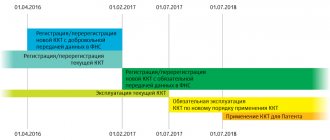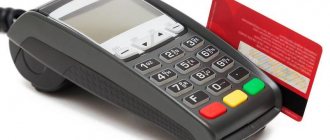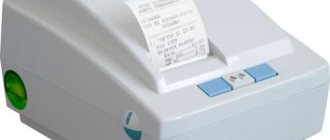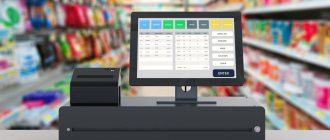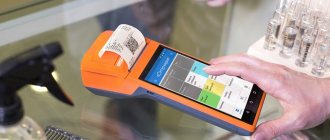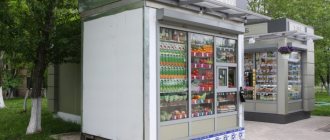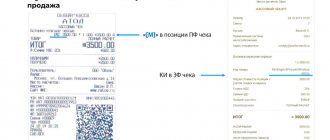Characteristics of trading operations
In peddling trade, the seller is in direct contact with the buyer. This type of trade includes trade from hands, trays, baskets and hand carts. This is stated in paragraph 18 of Article 346.27 of the Tax Code of the Russian Federation.
In distribution trade, goods are sold through specialized vehicles, as well as mobile equipment used only with transport. This type of trade includes trade using a car, a car shop, a car shop, a toner, a trailer, a mobile vending machine. This follows from paragraph 17 of Article 346.27 of the Tax Code of the Russian Federation.
Situation: are there any restrictions on the types of goods sold during delivery (distribution) trade for the purpose of applying UTII?
Yes, they do exist.
Despite the fact that Chapter 26.3 of the Tax Code of the Russian Federation does not establish such restrictions, when conducting retail trade outside of stationary retail facilities, the sale of:
- food products (except for ice cream, soft drinks, confectionery and bakery products in manufacturer's packaging);
- medicines;
- products made of precious metals and precious stones;
- weapons and ammunition for them;
- copies of audiovisual works and phonograms;
- programs for electronic computers and databases.
These restrictions are established by paragraph 4 of the Rules, approved by Decree of the Government of the Russian Federation of January 19, 1998 No. 55.
Thus, peddling and delivery trade in these goods is prohibited and, therefore, as an independent type of activity cannot be transferred to UTII. This special regime can only be applied if such goods are sold through a stationary retail chain.
Delivery trade on UTII: calculation features, whether a cash register is needed
In retail trade, an individual entrepreneur can reduce the area, which is taken into account when calculating the tax. Those premises are not included: But since the individual entrepreneur does not carry out operations for the sale of goods in such premises, it is not worth taking them into account when determining the tax amounts.
What kind of trade is delivery?
After the repair is completed, the physical indicator will change, since the area on which it was carried out will be taken into account.
If, during an audit, tax authorities make accusations of understatement of taxes, then by going to court, you will be able to defend your case.
If the premises are used to store goods, then there is no need to take into account its area when calculating the tax.
But then it is worth documenting this fact. Otherwise, such premises will be considered a trading floor by the tax authorities.
Surprising but true! When carrying out delivery and carry-out retail trade, persons wishing to switch to paying a single tax on imputed income are registered as a taxpayer of a single tax on imputed income with the tax office at the location of the organization or at the place of residence of the individual entrepreneur.
For example, an entrepreneur rents a room with an area of 23 m. The zones are separated by a temporary partition.
During the inspection, the inspector declared the understatement of taxes illegal, arguing that a temporary partition could not separate the storage and sales areas. The court sided with the taxpayer.
If the premises are divided by equipment used for sales by display cases, counters, etc.
There are cases when the court recognizes as legitimate the statement of the tax service about the excess of the area used for conducting activities.
For example, the company switched to UTII because it uses a premises with an area of 100 m2 for retail trade. The audit revealed that the store area exceeds the established limit of 200 m2.
The company did not submit documentation confirming that sales and settlement operations were not carried out in a certain area.
The court ruled that the use of the regime was illegal.
Unless the tax authorities prove that the trade was carried out in a premises with an area of more than 1.5 m.
It is often recognized as legitimate to distribute physical indicators also in proportion to the revenue that was received under UTII to total revenue.
Distribution is considered a detail of separate accounting, and payers can independently choose the methodology.
There is also the opposite opinion. The judges argue that there is no compliance with the imputed income, since the distribution is related to the funds actually received.
There are conflicting decisions regarding changing K2, reducing the amount of tax that is subject to transfer, and distributing employees.
Let's consider what questions entrepreneurs have when making retail sales.
When trading in building materials, the main condition for working on UTII is sales of goods and their delivery from warehouses. The premises that are used for displaying goods or concluding a contract without releasing them to the buyer in the same facility are not considered stationary.
Recommended Articles
But what about those activities in which the goods are located in exhibition halls? According to paragraph 13 of the Rules for the sale of products according to the sample, which were approved by the document dated July 21.
Samples should be presented on a display case, counter, or stand, which will allow the buyer to familiarize themselves with the product. This means that the exhibition hall can also be classified as a stationary object.
Find out what a sample of filling out the new UTII application form for year 3 looks like from the article: What object of taxation is established for UTII, read here.
If the area of such premises does not exceed the limit established by law, then it is possible to use UTII.
The premises where a contract for the purchase and sale of building materials is drawn up is not considered a retail trade facility, and the activity cannot be transferred to UTII.
A stationary network must have a sales area that is equipped specifically for retail trade.
This category includes shops and other buildings.
During a desk audit, the inspector will pay attention to the reporting, check whether the form is filled out correctly, whether the declaration and accounting reports, balance sheet and financial results report are submitted on time, and whether the data indicated in the documentation is reliable. If errors and violations are detected, the taxpayer will receive a notification, which will set deadlines for making corrections and submitting clarifying certificates.
If the deadlines for providing documentation are violated and there are inaccuracies in the inspections carried out, a representative of the authorized body may visit the enterprise itself with an inspection.
The duration of the audit can be 2 months, and in some situations - 4 - 6 months, if: The entrepreneur must provide a workplace for the inspector during the audit.
In the absence of permanent premises, the inspection can be carried out at the tax service office. The following information may be requested:
Source: https://price065.ru/zashita-prav-potrebitelya/11397.php
Physical indicator
When calculating UTII from retail or delivery trade facilities, use a physical indicator - the number of employees including individual entrepreneurs (clause 3 of Article 346.29 of the Tax Code of the Russian Federation). The basic profitability for this type of activity is 4,500 rubles. per month from each employee (clause 3 of Article 346.29 of the Tax Code of the Russian Federation). How to calculate the number of personnel, see How to determine the number of employees working in activities subject to UTII.
When calculating UTII when selling goods through other objects of a non-stationary trading network, use the physical indicators “trading place”, “vending machine” or “area of trading place” (clause 3 of Article 346.29 of the Tax Code of the Russian Federation). In this case, the physical indicator “vending machine” must be used regardless of what category the vending machines belong to: stationary or mobile. Such clarifications are contained in letters of the Ministry of Finance of Russia dated May 13, 2011 No. 03-11-10/24 and dated March 28, 2011 No. 03-11-11/72.
Ways to attract clients
An auto store does not need advertising, because this is a sought-after niche in trade. But even here it would be useful to use additional ways to attract customers:
- When visiting a locality for the first time, you should contact the administration and agree on trading activities and select a point of sale. Firstly, this will eliminate unnecessary problems with the authorities, initially determining the entire legality of the enterprise. Secondly, administration officials are interested in providing the village with food, so the news will spread to all residents instantly.
- Visiting a populated area at certain hours will allow buyers to plan their time, rather than constantly monitoring every approaching vehicle. If an entrepreneur keeps a schedule for visiting the village, he will gain favor and trust.
- Carrying out periodic discounts and promotions - in this case you need to act not regularly, but spontaneously. Even those people who do not need anything will approach the car in the hope of purchasing a cheaper product. There is a promotion - the buyer is happy. There is no promotion - in 80% of cases a person will still buy something.
The tax base
To calculate UTII, first determine the tax base for the reporting quarter. For carry-out and delivery trade, use the formula:
| Tax base for UTII for the quarter | = | Basic profitability per month (RUB 4,500) | × | Average number of employees for the first month of the quarter | + | Average number of employees for the second month of the quarter | + | Average number of employees for the third month of the quarter | × | K1 | × | K2 |
When retailing through other objects of a non-stationary retail network, calculate the tax base for UTII in the following order.
For retail spaces with an area of less than 5 square meters. m, determine the tax base for the quarter using the formula:
| Tax base for UTII for the quarter, calculated by the number of retail locations | = | Basic profitability per month (RUB 9,000) | × | Number of trading places used for purchase and sale transactions in the first month of the quarter | + | Number of trading places used for purchase and sale transactions in the second month of the quarter | + | Number of trading places used for purchase and sale transactions in the third month of the quarter | × | K1 | × | K2 |
For retail spaces with an area of more than 5 square meters. m, determine the tax base for the quarter using the formula:
| Tax base for UTII for the quarter, calculated by the area of retail outlets | = | Basic profitability per month (RUB 1,800) | × | The area of retail spaces used for purchase and sale transactions in the first month of the quarter | + | The area of retail spaces used for purchase and sale transactions in the second month of the quarter | + | The area of retail spaces used for purchase and sale transactions in the third month of the quarter | × | K1 | × | K2 |
When selling goods through vending machines, determine the tax base for the quarter using the formula:
| Tax base for UTII for the quarter, calculated by the number of vending machines | = | Basic profitability per month (RUB 4,500) | × | Number of vending machines used to sell goods in the first month of the quarter | + | Number of vending machines used to sell goods in the second month of the quarter | + | Number of vending machines used to sell goods in the third month of the quarter | × | K1 | × | K2 |
In this case, the values of the K2 coefficient should be applied depending on the category of vending machines used. For stationary vending machines, the coefficients established for stationary retail chain facilities are applied. Adjust the basic profitability of mobile vending machines taking into account the K2 coefficient established for non-stationary retail facilities. This is stated in the letter of the Ministry of Finance of Russia dated June 9, 2011 No. 03-11-09/35, addressed to the Federal Tax Service of Russia.
The values of physical indicators - the average number of employees and the area of retail outlets - are included in the calculation of UTII rounded to whole units (Clause 11 of Article 346.29 of the Tax Code of the Russian Federation). When rounding the size of physical indicators, discard values less than 0.5 units, and round 0.5 units or more to a whole unit (letter of the Ministry of Finance of Russia dated June 16, 2009 No. 03-11-11/111).
How to conclude an agreement to participate in the fair
To streamline small retail trade, city authorities hold fairs. They are paid and free. Often, organizers allow even individuals to trade at fairs without registering a business.
The annual fair plan is published on the administration website. The entrepreneur submits an application in advance and receives a place. The organizer concludes an agreement for participation in the fair. Most likely, the participant will be asked for quality certificates for the goods, and if they plan to sell food, medical books.
In Moscow, fairs are organized by the State Budgetary Institution “Moscow Fairs”. Of course, their work was stopped during the pandemic, but they plan to resume in the second quarter of 2021. The schedule should appear on this site.
You can find your city’s fair plan in a search engine using the query “fair plan for 2021” + city.
Change in physical indicator
If during the quarter the number of retail locations increased or decreased, take into account the changes from the beginning of the month in which they occurred (clause 9 of Article 346.29 of the Tax Code of the Russian Federation).
If an organization began or stopped using UTII during the quarter (for example, from February 20), then the tax base must be determined taking into account the actual duration of activities on UTII for the month in which the organization was registered (deregistered) as a single payer tax For more information about this, see How to calculate UTII.
The law on non-stationary trade may be adopted in 2021
According to the bill, delivery trade can be carried out by legal entities or individual entrepreneurs on the basis of a certificate of delivery trade. It is issued if a legal entity or individual entrepreneur has the right of ownership, lease or other legal basis of vehicles intended for delivery trade.
The essence of the terminology: non-stationary and mobile retail facility, delivery trade
Defined as a retail facility that is a temporary structure, structure, structure or device that is not firmly connected to the land plot, regardless of the presence or absence of a connection to utility networks.
Obtaining permission to sell any product is not difficult, but it is very important to choose the appropriate tax payment system. To understand the issue of choice, it is necessary to consider in detail all the nuances of the main tax systems in order to ultimately make the right decision. Registration of an individual entrepreneur is carried out within five days, but you must choose the system by which you will work in advance. You can register your individual enterprise yourself or with the help of special organizations, but you must choose taxation yourself.
Traveling trade taxation 2018
N 19n “On approval of the Administrative Regulations for the execution by the Federal Tax Service of the state function of registering, in the prescribed manner, cash register equipment used by organizations and individual entrepreneurs in accordance with the legislation of the Russian Federation.” To register cash register equipment, the organization and individual entrepreneur submit to the tax authority at the place of registration of the organization (location of a separate division of the organization, place of residence of an individual entrepreneur) the following documents:
- application for registration of cash register;
- passport of the cash register subject to registration;
- technical support agreement concluded between the user and the KKT technical service center.
In this case, a lease (sublease) agreement for the premises is not required when registering cash register equipment.


